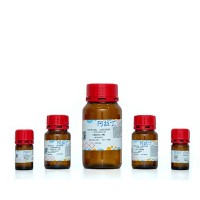Large Plant Samples: How to Process for GMA Embedding
互联网
531
It is often necessary to process large plant samples for light microscopy studies, but due to structural characteristics of plant tissues, especially intercellular spaces, large vacuoles, and phenolic substances, results are often unsatisfactory. When large samples are embedded in glycol methacrylate (GMA), their core may not polymerize, remaining soft and moist and making it difficult to cut microtome sections. This situation has been erroneously interpreted as the result of poor infiltration, when the soft core of these samples is actually the result of incomplete polymerization. While GMA is in fact present inside samples, unsatisfactory polymerization results from rapid external polymerization that does not allow sufficient hardener to reach the sample core, while the relatively large volume of GMA inside the tissue block also dilutes the hardener. In this chapter we propose a new method for processing large plant specimens that avoids these problems by: (1) slowing the polymerization process through cooling in order to permit the penetration of hardener into the sample core and (2) increasing the hardener:GMA ratio to aid polymerization of the sample core.









